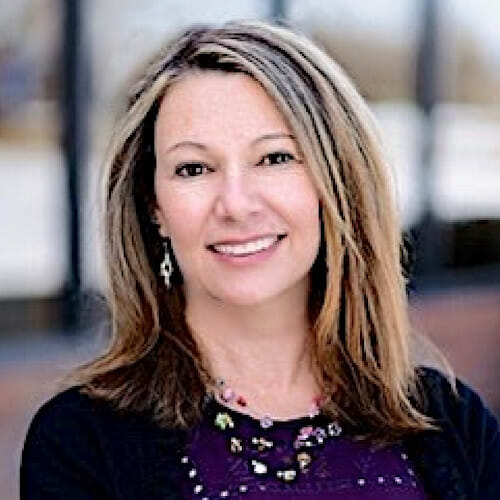
We have been faced with a pressing long-term care dilemma for the last several years, and it is only getting worse.
The scarcity of senior care staff is a significant concern, especially with rising operational costs and an increasing number of aging adults needing long-term care.
Escalating demand for caregiving services, plus high levels of job stress and burnout, make it difficult to find and keep qualified caregivers.
From February 2020 through December 2022, assisted living communities and nursing homes collectively witnessed a staggering loss of jobs (4,200 in assisted living and 210,000 in nursing homes, according to the American Health Care Association/National Center for Assisted Living). And staffing shortages were prevalent even before the pandemic, indicating a persistent and ongoing issue.
Relying on competitive recruitment methods such as wage increases and staff poaching among healthcare facilities no longer is constructive for communities. Those methods only perpetuate a cycle of instability and fail to address the underlying systemic issues causing the shortage in senior care staffing.
It’s beyond time for a transformative approach that attracts, supports, and retains the dedicated individuals who are the lifeblood of the communities supporting our aging adults.
Striking a balance in senior living communities
Communities are facing a dual challenge of a growing population of baby boomers in need of services and care and a decline in the next-generation workforce.
As the percentage of people aged more than 85 is projected to double to 14 million by 2040, senior living and care communities find themselves in a delicate balancing act: tackling a staffing crisis while still meeting the expectations of residents and their families. At the same time, they must create an environment that attracts and keeps dedicated individuals who are passionate about serving older adults.
Communities such as these are grappling with a significant challenge: how to effectively manage their staff’s time. Senior care teams, in particular, are becoming increasingly frustrated with the inefficiencies and disjointed communication methods that are prevalent in their day-to-day operations.
A nurse with 20 years of experience shared that she decided to quit after the arrival of the third executive director in just two years. She expressed feeling unable to continue pursuing her passion because she was consumed by the constant task of educating new leadership and struggling to enforce constantly changing cultures.
When she chose a career in long-term care nursing, her goal was to offer compassionate care, not to spend each day exhaustively investigating interactions among staff, residents, families and partner providers. This is precisely why caregivers nationwide are struggling to revive their initial passion for joining the industry in the first place.
With multiple providers and care team members involved in the shared care of the older adult’s journey, there is a growing need for more streamlined, productive and efficient ways for the care team to stay in lockstep. Common challenges include miscommunication, delays in information sharing and fragmented care coordination, which can be addressed through better connectivity and a streamlined communication platform.
Creating a nurturing environment that values, motivates and supports senior care staff with adequate resources bolsters their care delivery.
Despite the daunting nature of these challenges, senior living and care communities are committed to crossing the chasm with innovative solutions that strike a harmonious balance between meeting the needs and expectations of residents and families, while simultaneously creating a positive environment for staff members, focused on connection, harmony and efficiency.
The key to care from everywhere: How smart home devices benefit senior care staff
Contrary to popular belief, older adults are not as technologically challenged as we might think. Many of them are quite capable of learning new technology. Smart home devices, such as Alexa for Senior Living, offer senior living residents a convenient and accessible means to unlock the potential of technology, providing them with several benefits for their daily lives. Those devices allow residents with their families and care team in innovative ways.
At present, the senior living industry faces a staggering annual turnover rate of around 85% among its workforce. Nevertheless, we have witnessed a notable improvement in care quality and efficiency by implementing direct communication channels between providers and older adults. This innovative approach has resulted in an impressive reduction of up to 40% in staff turnover.
The integration of those devices also brings significant time-saving benefits for employees, freeing up, on average, three to five hours each week per care staff. Additionally, it promotes enhanced communication between residents and their families, enabling loved ones to actively participate in the care of their aging family members. This use of smart home devices creates a win-win situation by enabling greater resident independence, improving care quality, increasing family satisfaction and providing greater peace of mind for all involved parties.
By dispelling the misconception that older adults are not tech-savvy and embracing the benefits of smart devices, we can unlock new possibilities for the well-being and connection of seniors in their care journey.
Connected care: Enhancing staff retention through interoperability in senior care
The growing desire among older adults to age in place has shed light on the crucial connection between interoperable systems in senior living and care and staff member retention. As older adults express their preference to remain in their own homes and communities as they age, there is a greater need for effective care delivery models.
This shift in senior care preferences has emphasized the importance of interoperable systems that provide seamless communication and engagement among all the organizations involved in their care.
By implementing interoperable systems, providers can ensure that staff members have access to detailed and up-to-date information about residents. This access to real-time data allows caregivers to provide more personalized care, addressing the specific needs and preferences of each resident while giving them more independence.
Resident/patient monitoring and virtual care in older adults’ rooms have further highlighted the significance of interoperable systems. Those technologic advancements help staff members monitor and even provide care remotely, reducing the need for constant in-person visits.
When care teams are equipped with the right information and tools, it significantly enhances their workflows and can even prevent some hospitalizations, leading to stronger well-being and connections with the older adults they serve.
Shaping the future of work in senior care: The human and technology connection
Technology is not a stand-alone solution but rather a powerful tool that should be leveraged in harmony with a human-centric approach.
The future of work in senior living and care lies in striking a balance between the efficiency and convenience that technology offers while preserving the vital human connection and compassion that are integral to caregiving.
The promise of innovative solutions will help address the staffing crisis currently plaguing the industry. By embracing the potential of technology and combining it with a deep commitment to nurturing and supporting the workforce, we can attract quality caregivers and ensure exceptional care for our older adults.
By combining technology and humanity, we can shape a future of work that is characterized by innovation, sustainability, and, above all, a focus on the well-being and dignity of our aging population.
Katherine Wells is CEO of Serenity Connect.
The opinions expressed in each McKnight’s Senior Living marketplace column are those of the author and are not necessarily those of McKnight’s Senior Living.
Have a column idea? See our submission guidelines here.


